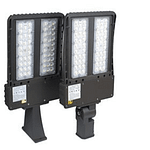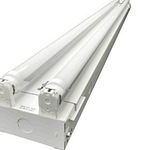
At Sitler’s, we are constantly looking forward and how we can better meet the needs of our clients. But in honor of another year passing, today we are taking a look back at our most-read blogs in 2018! Thank you all for visiting our site week after week. We look forward to bringing you more news, articles, blogs, spotlights, and more in the coming year!
1. Installing LEDS: Benefits of Ballast Bypass
If you walk into a building, whether it’s an office, school, library, or store, you are likely to see fluorescent lighting if you look up. You may even notice a few bulbs burnt out, or some flickering on their last legs. What you can’t see is that the bulb is actually fine, and it’s the ballast that has gone bad. The ballast is the metal fixture that encases the fluorescent tubes, and they require just as much maintenance as burnt out bulbs.
Read More…
2. How are LEDs Made?
The types and varieties of LEDs grow every day it seems, but today we are taking it back to the basics. We are here today to answer the ever-present question of, “How are LEDs made?” We’ll take you through a quick background on the key differences between LED lights and traditional lights, what materials go into creating the light emitting diode, how those materials are designed and, finally, how they are connected together to create the most energy-efficient light on the market!
Read More…
3. LEDs & Photosensitive Seizures
November is National Epilepsy Month and we at Sitler’s wanted to take the time to talk about how fluorescent lighting may contribute to increasing the risk of photosensitive seizures. It is important to state that epilepsy cases differ from person to person and not all people who suffer from seizures are photosensitive. Around 1 in 100 people suffer from photosensitive epilepsy, which can be triggered by many circumstances, such as strobing or flashing lights, flickering lights, or contrasting light and dark patterns.
Read More…
4. 4 Advantages of LED Street Lighting
You’re driving home, past the dull, orange streetlights, after working late again. The lights are flickering on the edge of a dark highway as you’re making your way home for the holiday festivities. Your eyes start to droop, you’re getting tired and blaring your music isn’t seeming to help. You’re walking downtown to meet a friend for a drink, but keep looking around because you can’t make out the person behind you. We’ve all experienced one of these moments before, and what do they all have in common? Poor street lighting.
Read More…
5. LEDs and CO2 emissions
With issues such as oil pipelines and global warming in the news, we thought we’d take a minute to talk about how LED lights can help you reduce your carbon footprint, helping you save money while benefiting our environment.
Read More…
6. The Science Behind LED Dim to Red Swine Lights
Welcome to Iowa, the pork capital of the world! Raising swine isn’t simply a job here, it’s a large part of our state’s makeup. According to an Iowa Pork Producers Association 2012 census, there are over 6,266 hog operations running in Iowa. On these hog operations, there are over 20 million pigs being raised in the state of Iowa at any given time!
Read More…
7. Causes and Effects of Light Flicker
We’ve all seen it before; the flickering, fluorescent lights at doctor’s offices, meeting rooms, gymnasiums and more. Our eyes are instantly drawn towards this scene, causing distractions, headaches, annoyance, and lack of productivity when it is most needed. Today, we are going to dive deeper into what causes flickering in traditional bulbs and how this phenomenon can negatively impact you.
Read More…
8. 4 Ways to Tell Quality LEDs from Cheap LEDs
LEDs are flooding the lighting market. You can find them in big name stores like Target and Walmart. But are they the highest quality LED out there? LED prices are dropping, but it’s important to know if products are lower in quality as well as lower in price. Here are 4 questions to ask and consider when shopping for LED lighting to help you determine the difference between a quality LED light and a cheap LED light.
Read More…
9. Why Do LEDs Perform Well in Cold Weather?
Have you gone to switch out an incandescent or fluorescent light bulb, nearly burning your fingertips in the process? As traditional lighting requires heat to power on and create light, the glass bulbs heat up quickly and to dangerous temperatures if touched. Due to their need for heat to simply power on, traditional light bulbs perform below average when used outdoors, especially in the fall and winter. Some lights may not be able to power on at all in below freezing weather.
Read More…
10. Maintenance Costs: Traditional vs LED Lighting
You’ve heard us say it so many times, we’re beginning to sound like a broken record. LED lights not only shine brighter and last longer, but they also save you money on your energy bill! However, did you know you save even more money on LEDs, thanks to reduced maintenance costs? It’s not often when we install lights that we consider the maintenance cost on top of the upfront cost of the bulbs. Yet, maintenance costs can eat away at our wallets if we don’t pay attention. Here’s how the maintenance costs of fluorescent and traditional lighting hold up to LED maintenance costs.
Read More…
Posted in Sitler’s Spotlights















